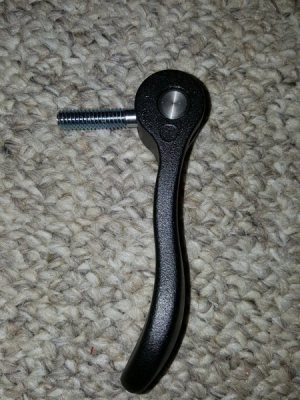A little insight from a "casual" user, if I may. I'm not in this for regular use, just to make a piece when I need it. I have a "big" (12x36 Craftsman) machine now, but have worked with small machines from the UniMat DB-200 up. And Pop's hand drill in a vise when I needed but had no lathe. Rough but do-able
........ I do have a slightly smaller machine to do metric threading when needed. But the mini (6x12) was passed on to a maker's group a few years back when I got my hands on the Craftsman.
For the saddle clamp, I found a bolt that adjusted the tightness of the saddle and replaced it with a cap-screw and wrench. That stays on the machine. On the right near side on mine. I dont know if it has a gib or just adjusts. It does stop the saddle. I use it regularly for facing cuts, and especially cutting off.
For the cross-slide, well it's an old machine and the dovetails are badly worn. I replaced one of the gib screws with a longer screw and a home-made knob. The knob was soft plastic, easy enough to find these days and the screw heated until it could be forced in. When it cooled, voila, an adjustable set screw. I can run the cross-slide in (or out) with one finger and then tighten the gib for the last couple of turns. It ain't perfect but does get by worn dovetails. And I can cut a half-thou when I need to. Just have to ease into it with the last couple of cuts light. And use a reading glass so I can see the dial. There's one on the compound too, but doesn't get used much.
There is always some part larger than you can chuck up. Even when you have access to a shipyard lathe. The art is to figure out a way to get around it. To make it work anyway. I truely hope this will be of assistance.
Bill Hudson

